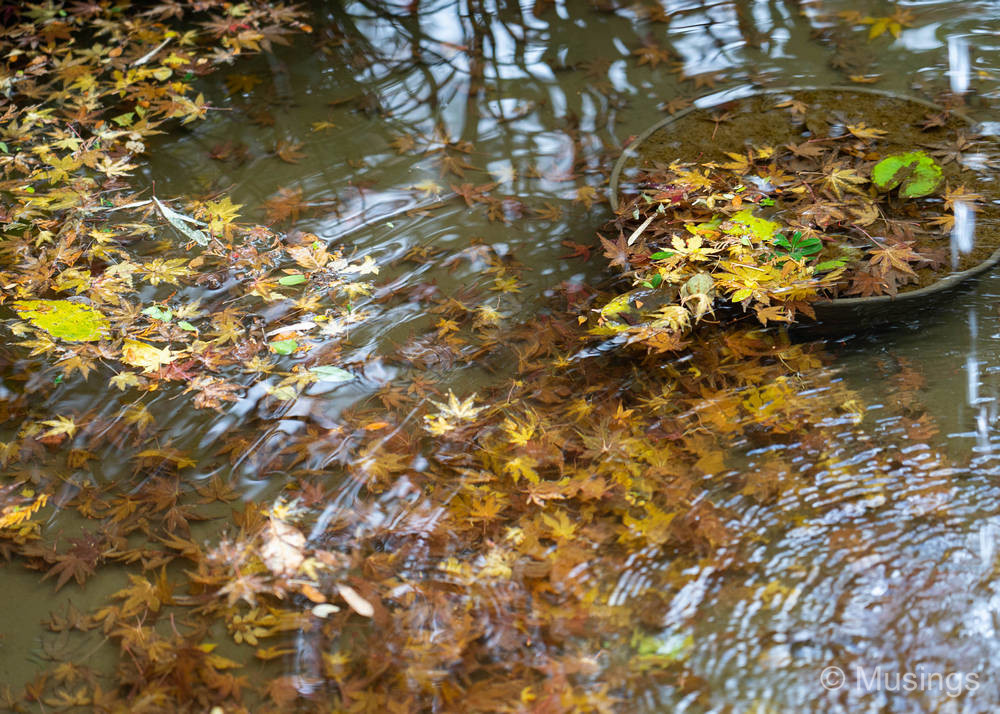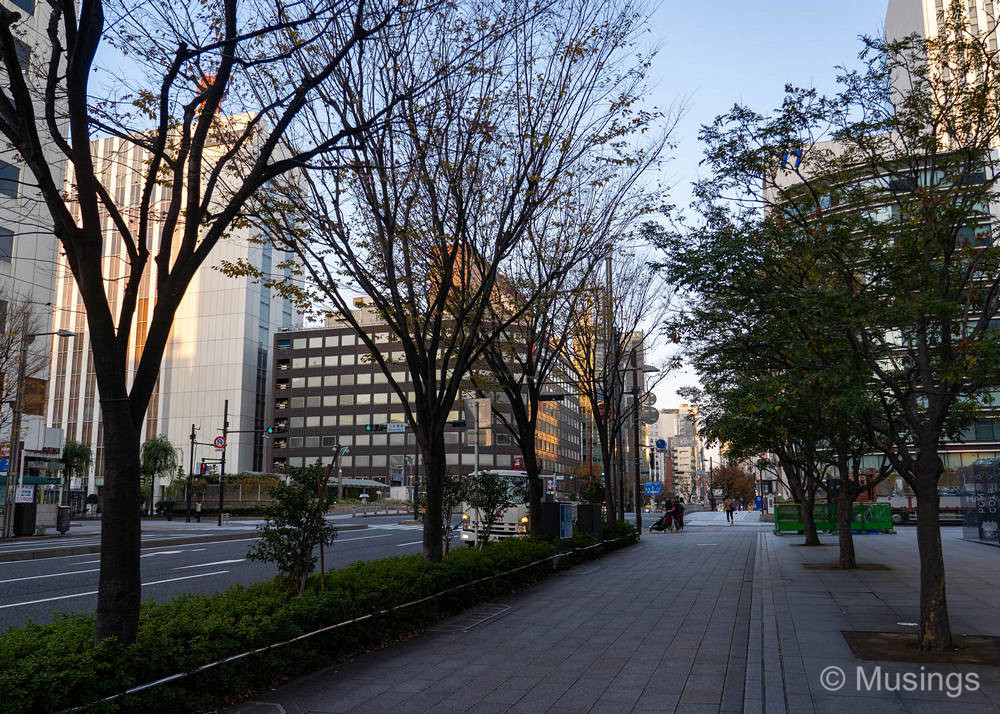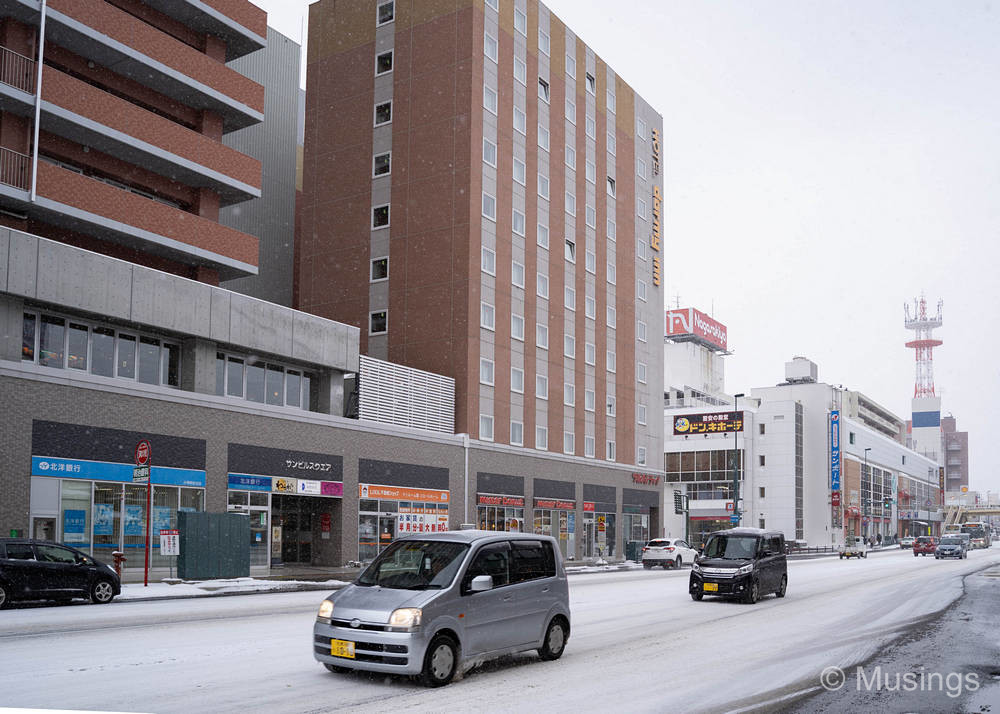Our 15 day vacation in Japan has been the longest family trip we’ve had, and in comparison to the next longest last December i.e. 12 days in Taiwan – this one has been longer by quite a bit! As is my usual tradition, I do a final reflective post that looks at different non-itinerary aspects of our trip, with an arms-length perspective. I’d just recently finished an 11 day trip to Kyushu and Chugoku in September too, so I’ll try not to repeat my comments against a similar reflections post I made then for that trip.
Japan is easily one of the most popular places for vacations, especially from our part of the world in December. Granted, it’s not the most humid time of the year for us to want to travel far to escape the usual tropical heat. But in the month of December alone, I counted at least nine Facebook friends who were also making similar trips to the country – including four in Hokkaido, and covering broadly the same places we were visiting. Trying not to repeat the same photos and commentary for sharing was no easy feat! But I guess one perspective we have is that we’re both pretty critical and also a little cynical travelers who’re also vacationing on family budget – i.e. value for money is high on the priority for us, as is also whether places and sights are appropriate for kids.
Moreover, we appreciate and enjoy several aspects of Japanese culture, e.g. their cuisine, the general reliability of their transportation network, but we’re not wearing rose-tinted glasses either and will readily comment on things that don’t work well or don’t make sense to us. Japan has currently facing several serious challenges – e.g. the stagnant economy, gender inequality and male dominance in work culture, the rapidly aging population and a birth rate that’s even worse than Singapore’s and is escalating into a major labor crisis. These might not affect the typical temporary visitor immediately, but they underline that fact that this is a society with huge, intractable problems. One might counter which country is perfect then: none are, but that’s not my point. The tour leader of our Asahikawa trip – a Hong Konger by birth who’s lived and work in Japan for 14 years – was particularly brutal about his evaluation of Japanese culture, commenting on a variety of idiosyncrasies he’s observed living in Japan – including employment and job migration, the absence of non-locals in top management, children school bags (!), and even the kind of work the elderly have to do.

The cost of flying into the country is an inevitable expense, a point that was also interestingly repeated several times during our day trip to the Asahikawa area: our tour leader remarked that travelers from South-East Asia have come a long way, compared to Hong Kongers/South-Koreans and the Chinese who took just an hour or two flight here. We scringed a little when we opted for an indirect flight with Cathay Pacific to Taiwan, with a stopover in Hong Kong. We saved a little yes as this was still a full-service flight, but the additional time we spent in transit was not worth it, especially when you’re transiting through a crowded airport like the one in Hong Kong. This trip, we opted for Singapore Air. The flight times weren’t ideal: we’d be landing in Tokyo in mid-afternoon, and departed in the morning – but the kids certainly enjoyed the in-flight service and entertainment, and legroom was plenty even in economy class. I fear they’re going to keep asking we fly by our national airline again haha.
The transportation network in Tokyo city took us a while to understand. Oh, we were expecting the criss-crossing lines to take some getting used to. But we underestimated how convoluted the numerous train lines were, the sheer number of platforms and size of the main train stations, and also how crowded the trains turned out to be during most times of the day. While our hotel is served by a train stop that’s in reasonably walking distance, the fact that it was some stops away from the least crowded main intersection station – i.e. Shinagawa, with Shinjuku even further north – meant that we’d easily have to spend at least 30 minutes just trying to get from an uninteresting area to a more ‘happening’ part of Tokyo. The choice of hotel was a considered decision of course since this was our first time as a family to Tokyo. But next trip here, we’re going to avoid staying so far from the Tokyo central.
Singaporeans also have it real lucky with our SMRT system. Yes, there’s been the occasional train failures and the like. But on the overall, the SMRT is reliable, comfortable, and the crowds in trains on its heaviest day is nothing compared to the masses of commuters in Tokyo peak hour. And fares are just cheaper: a short train ride on the SMRT costs SGD1. The cheapest train ride in Japan routinely costs ¥210/SGD2.60 – and that’s even if you travel just one stop. The costs of travel for the four of us racked up really fast this trip – and it got to the point that traveling by cab was just going to be marginally more expensive for short distances.

We were also slow in obtaining Suica cards for everyone. The Suica card is an absolute must if you’re going to make use of the country’s bus, tram, subway or train systems. No, you don’t get significant discounts off fares paying by the Suica card. Rather, the main advantages of using it are not having to bring along a sack of coins just to pay to buy single-travel tickets – and importantly, it makes crossing between lines a lot easier. Our first two days of trying to navigate Tokyo city’s intersecting train lines was painful, and we made more than a few mistakes by exiting the wrong gate, and having to purchase new tickets just to get to the right platform to make connections. The Suica card will give you that bit more latitude when you stumble, as you don’t have to worry about the cost of journey exceeding what you paid for the single-use ticket.
One thing about the Suica card though: adult cards are easily purchasable from ticket vending machines. The child Suica ones on the other hand require Passport proof of identity and forms will need to be filled-up. The ticket office staff will be insistent on the former: we asked one evening if a high resolution scan of the passport would suffice as we’d kept the Passports in the hotel safe, and were flatly refused – and even had one staff scowl at us for even daring to ask such a question. The child Suica cards are personalised, so the kids – especially Hannah – was very proud to have a transportation card bearing her name haha.
We picked up the 5 Day JR Hokkaido Rail Pass for use as well. Based on our movement pattern, the cost of travel on JR systems ran up to SGD409/adult. With the pass costing SGD275, it would had been significant cost savings – if we stuck to the itinerary that is! We ended up dropping our day trip to Noboribetsu, a city 2 hours south of Sapporo, and the round-about trip for that alone would had been SGD118 or so. Oh, we still came out slightly ahead, cost-wise, and on account that the Pass included travel between Sapporo => Hakodate => New Chitose Airport, a route that cost roughly SGD280/adult – just that the savings this trip wasn’t as significant anymore.
The wife also penned a heartfelt Facebook post observing that the Japanese did not seem to readily give up seats on the train to the elderly, the pregnant or to young children – an observation that was also shared by friends who’d also traveled in similar conditions like us to the country. What I reckon she wasn’t expecting was the fierce defence of Japanese culture from other friends insisting that this was the norm, and the litany of reasons why this makes sense in the country. I reckon both detractors and supporters of this particular aspect of Japanese culture have their point. But in defense of the wife, there is context: there are some elements of universalism that apply to all, regardless of culture. Most modern day societies won’t condone littering, profanity, outrage of modesty no matter where they are. Granted these are different types of behavior, but the logic remains the same: why should protecting of the vulnerable and those who’re less able to take care of themselves be a trait that’s indifferent in Japan.
I’ve also made several remarks throughout my posts on the tourist crowds. Whether we faced hordes really seemed to depend on the location we visited. Some places were bereft of the tourist hordes: e.g. Onuma Quasi-National Park, Takino Suzuran Hillside Park, Hokkaido University and Museum, and Makomanai Cemetery. Other places saw a good number of visitors but because of how large the area is, it didn’t feel crowded: e.g. the Railway Museum, Sakaimachi Street, and Odori Park. Other places were Oh-My-Goodness-What-The-Heck, with the worse being Mt. Hakodate. I had an ex-student making the same Hokkaido trip, and during his ascent up Mt. Hakodate via the same ropeway the day after we went up, he ended up waiting two hours for the crowd to clear before he was able to get his million dollar shot of Hakodate city at night. A fellow blogger who also visited Mt. Hakodate last year also commented on how crowded the place is.
My sentiments about visitors from that country up north of Singapore have been revealed here in our blog numerous times now. No, I’m not prejudiced against people of my own skin colour. What I find particularly gyrating – very personally if it comes to it – are people who speak in loud, shrill voices – a trait that those very people up north seem to consistently demonstrate. One might argue that westerners and Caucasians by body mass are just as likely to shove and push in crowded places. Indeed, there’s little that can be done about the large crowds – famous places of attraction will pull in throngs of visitors. But constantly hearing loud and often ear-splitting chattering from people who seem completely oblivious that everyone else can hear their voices just does not make it pleasant for others.

On more happy thoughts: this trip has been the kids’ first experience with snow and subzero temperatures. And, surprisingly, they both reacted very well to it, all things considered. In fact, of the four of us, the one who felt the biting cold the most was probably myself, and specifically, my hands! This was largely in part because the winter gloves I opted for were not fully padded, as I needed some finger flexibility in order to operate four different equipment: including the Sony A73 as the principal camera, the Canon G7X II/Olympus E-PL9 as my secondary camera, the DJI Osmo Pocket, and the smartphone. Fingers freezing aside, all of us were at least kept suitably warm in the upper body, with appropriate thermal wear, scarves, head wear, and winter jackets.
Walking on ice and snow was also a novel experience, and the correct technique to avoid slipping and falling was something the kids had to learn very fast. The only person who didn’t slip at some point and land on the butt this trip was myself, but I had a number of very close calls! The wife and Hannah slipped and fell twice, and Peter at least four times. Basically: wherever possible, walk on snow. And if not, graveled pavements or road-sides. Avoid ice at all costs LOL.
And finally, is 15 days too long a winter vacation period for people like us who live in the tropics? This one took a while for the wife and myself to reflect: but we’re in agreement: 15 days was really pushing it! Ten out of the fifteen days were spent in subzero temperatures, and it came to a point where having to get ready to step out into the freezing cold every morning was a real chore, especially since we had to not just get ourselves ready but also the kids. To that end, if we’re traveling to a subzero climate again, we’re going to have to try to keep the stretch where we’re in freezing areas to maybe no more than eight days at a stretch before we return to less cold climates within the country.
In all, this has been a fabulous trip, where things worked great – excepting for a lens that fell, a hotel room where hot water didn’t work, and that Peter and myself developed a cough, and myself a runny nose too. I reckon the kids will remember all the fun times they had in snow – and if not, the roughly 220GB of 4K video footage I took should help them remember! Japan is also one of those places that the wife readily does not mind returning again, so yes – we just might winter again in Japan come December 2020 – and this time, we’ll do the Nagano and northwards area this time!
Recent comments